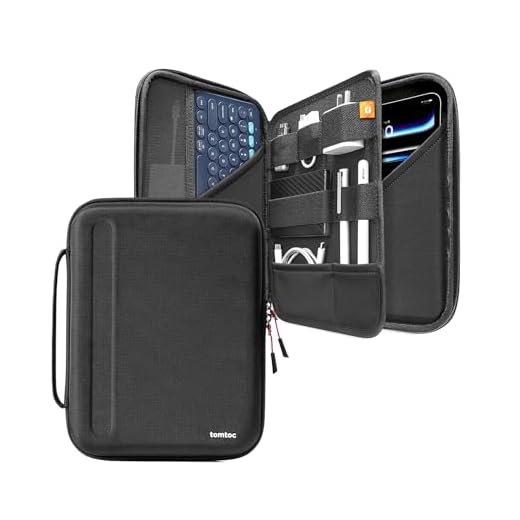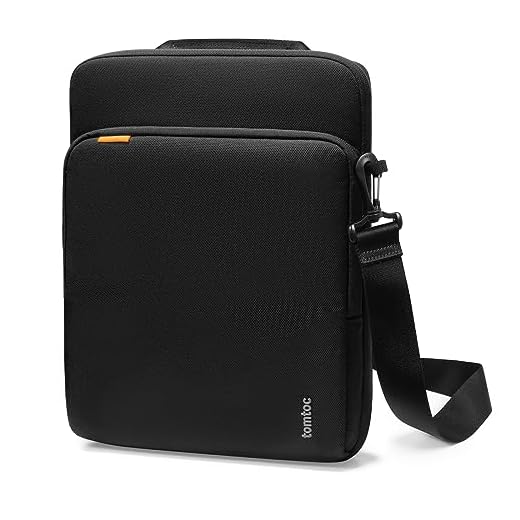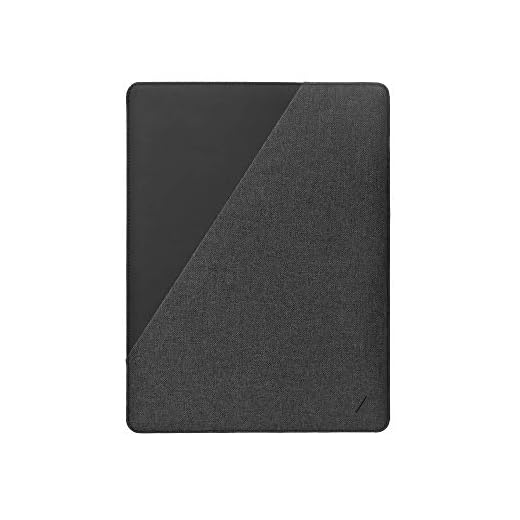







Regulatory summary: International rules set by IATA and guidance from aviation authorities restrict lithium‑ion spare batteries from being stowed in the aircraft hold. Installed batteries inside consumer electronics are generally allowed in checked stowage by some carriers, but airline-specific policies can prohibit that practice. Batteries rated above 100 Wh but at or below 160 Wh require airline approval; cells above 160 Wh are forbidden on passenger aircraft.
Battery context: Typical tablet-class batteries fall in the 20–40 Wh range, well under the 100 Wh threshold used for airline approvals. Confirm the exact watt‑hour rating via the device label or the manufacturer’s technical specifications before travel.
Packing recommendations: Keep the device in hand baggage whenever possible. Power the unit completely off, remove external accessories, place inside a padded sleeve or hard case, and cushion it between soft items. Spare lithium cells or power banks must travel in cabin carry‑on with terminals protected (taped or in original packaging). If a carrier insists on stowage in the hold, ensure the device is powered off, packed in a crush‑resistant container, and backed up and encrypted prior to departure.
Practical precautions: Check the chosen airline’s battery and carry‑on policies before booking; obtain written approval for batteries between 100–160 Wh; retain purchase receipts for high‑value electronics for customs or loss claims; secure the device with a strong password and consider remote‑wipe capability.
Store Apple tablet in carry-on; avoid placement in the aircraft hold
Keep the device in cabin baggage to reduce risk of impact, theft and thermal events; spare lithium-ion batteries and power banks must remain in the cabin compartment.
Regulatory limits and screening
Typical lithium-ion rules: cells up to 100 Wh – permitted; 100–160 Wh – airline approval required and usually restricted to cabin only; over 160 Wh – not allowed on passenger aircraft. Security screening often asks for removal of larger electronics from cases for X‑ray inspection.
| Item | Cabin (carry-on) | Aircraft hold | Action / Notes |
|---|---|---|---|
| Tablet with installed battery ≤100 Wh | Permitted | Permitted (but higher risk) | Keep in carry-on when possible; power off during transit |
| Spare lithium-ion cells / power bank | Permitted (terminals taped / original packaging) | Prohibited | Limit quantity per airline; pack in carry-on and protect terminals |
| Battery 100–160 Wh | Allowed with airline approval | Usually prohibited | Obtain airline written permission before travel |
| Battery >160 Wh | Prohibited | Prohibited | Transport only via cargo with special handling |
Packing checklist
Power off device and enable full-disk encryption or strong screen lock.
Back up data to cloud or external storage and record serial number/IMEI.
Place device in a hard protective case and cushion between clothing if placed in hold despite recommendation.
Remove external SIM or microSD cards and carry them separately when possible.
Confirm carrier and airline policy on electronics and declared value; verify travel insurance covers electronics stored outside the cabin.
Airline rules for transporting tablets in aircraft hold and applicable restrictions
Recommendation: Prefer cabin carry-on for portable tablets; if stowage in the aircraft hold is unavoidable, ensure the device’s battery meets IATA/ICAO watt‑hour limits, protect the unit against damage and never place spare lithium batteries or power banks in the hold.
- IATA/ICAO baseline:
- Lithium‑ion cells: ≤100 Wh – no airline approval normally required; 100–160 Wh – airline approval required; >160 Wh – forbidden on passenger aircraft.
- Lithium‑metal cells: lithium content limit ~2 g per cell; many airlines prohibit spares containing >2 g.
- Spare batteries (removed from equipment) and portable power banks are universally required in the cabin – not permitted in the aircraft hold.
- Major U.S. carriers (American Airlines, Delta Air Lines, United Airlines): devices with factory‑installed batteries generally accepted in the aircraft hold if powered off and protected; spare batteries and power banks must be carried onboard in carry‑on; batteries >100 Wh require airline approval at check‑in.
- European flag carriers (British Airways, Lufthansa, Air France, KLM): similar approach – installed batteries allowed in the hold but cabin carriage recommended; declare larger batteries and follow packaging guidance for checked stowage when approved.
- Middle Eastern & Asian carriers (Emirates, Qatar Airways, Singapore Airlines): strict enforcement of spare battery rules; devices may be checked only when switched off and protected, but cabin storage is preferred and sometimes mandatory for certain battery types.
- Low‑cost and regional operators: policies vary by aircraft type and route; several budget airlines restrict large electronics in the hold during short‑haul flights – always verify the carrier’s published policy before arrival at the airport.
- Before departure, read the carrier’s hazardous‑goods section for specific limits and declaration procedures.
- Switch the tablet off, disable any wake‑on‑movement functions and pad the unit to prevent screen/hinge damage if stowed in the hold.
- Remove external batteries and place them in carry‑on; tape exposed terminals or leave in original packaging to prevent short circuits.
- If the device contains a battery between 100–160 Wh, secure written approval from the airline at check‑in and carry manufacturer documentation showing watt‑hour rating.
- At security and check‑in counters, present devices and any required approvals proactively to avoid last‑minute refusals.
Check the carrier website and applicable national aviation authority guidance before travel; local rules and airline interpretations of IATA standards determine final acceptance.
Which TSA and IATA battery rules determine whether a tablet may be stowed in hold baggage?
Prefer carriage of the tablet in cabin baggage: spare lithium‑ion cells (including power banks) are forbidden in hold; installed rechargeable batteries are allowed in the aircraft hold only under strict conditions and many carriers still require cabin carriage.
TSA alignment with FAA rules: spare lithium‑ion batteries must travel in carry‑on and have terminals protected (tape, original packaging, or separated by individual plastic sleeves). Devices with installed lithium‑ion packs are permitted in hold if powered off and protected against damage, but TSA advises cabin carriage because a battery fire in the aircraft hold cannot be accessed during flight.
IATA Dangerous Goods Regulations set capacity limits by watt‑hours (Wh): batteries ≤100 Wh – permitted without airline approval; batteries >100 Wh and ≤160 Wh – allowed only with airline approval and often limited to two spare batteries per passenger; batteries >160 Wh – prohibited on passenger aircraft. Power banks are treated as spare batteries under IATA and therefore must be carried in the cabin.
How to verify capacity: locate Wh rating on the device or battery label; if only voltage (V) and ampere‑hours (Ah) are listed, calculate Wh = V × Ah. If the result falls in the 100–160 Wh range, obtain written airline approval before travel and carry proof at check‑in.
Packing actions at departure: keep the device powered off, prevent accidental activation (remove removable batteries where possible), protect against crush or short circuit, place spare batteries in carry‑on with terminals insulated, and present manufacturer specs or airline approval documents when requested. Expect individual carriers to impose stricter rules than TSA/IATA; confirm the carrier’s battery policy prior to travel.
Pack and power down a tablet to reduce damage and fire risk in an aircraft hold
Always stow the tablet in carry-on when possible; if placed inside a suitcase bound for the aircraft hold, power the unit off completely and follow the steps below.
Packing and physical protection
Use a rigid protective case or a dedicated padded sleeve inside a hard-sided suitcase. Position the device in the centre of the bag, surrounded by soft clothing on all sides to prevent point pressure. Keep the screen facing inward and away from zippers or metal objects. Remove detachable accessories (stylus, external battery packs, dongles) and pack them separately in cabin baggage; if non-removable, place the device in a sealed plastic bag to limit moisture contact. Do not pack next to toiletries, tools, or heavy items that could shift. Lock the suitcase with an airline/TSA‑approved lock; avoid compressing the device with tight straps.
Powering down, battery state and heat management
Shut the tablet down fully – not sleep or standby – and disable any scheduled power‑on, wake‑on‑alarm, or auto‑resume settings. Set battery level between roughly 30%–50% before stowage to lower the chance of thermal runaway while meeting typical manufacturer guidance. Remove or secure external spare lithium batteries: terminals must be taped and each spare carried in cabin rather than packed inside checked bags. Disable biometric unlock and ensure a strong passcode, enable device tracking and remote wipe features in case of loss. Protect the device from extreme temperatures: avoid exposing the suitcase to direct sunlight or leaving it in a hot vehicle; aircraft cargo holds can cool but may still see temperatures outside room range, so avoid packing devices that were recently exposed to very high heat. If concerned about accidental activation, use non‑adhesive padding over the power button or wrap the tablet in a soft sleeve that prevents button pressure.
For unrelated household purchases and to compare compact appliances, see best fully integrated dishwasher under 300.
How to document and file claims if a tablet is damaged, lost, or confiscated from aircraft hold
File a Property Irregularity Report (PIR) at the airline desk before leaving the terminal; obtain the PIR number, flight number, original baggage tag, and a signed/written note from the agent.
Documentation checklist
Photograph device from three angles (front, back, ports) plus close-ups of damage and original packing; include a timestamped boarding pass and baggage tag in at least one photo. Capture device serial number (Settings → General → About or engraved label) and a screenshot showing the serial. Retain original purchase receipt, warranty/AppleCare documents, credit-card statement used for purchase, and any repair invoices. If confiscated by security or customs, request and keep the official seizure/incident report, case number, and contact details for the seizing agency.
Produce an itemized contents list with estimated values and attach prior appraisals or receipts for high-value accessories (keyboards, stylus, cases). For phones/tablets with activation locks, include proof of device ownership (Apple ID email, original box showing serial). Save all email correspondence and photograph any airline or airport tags applied after discovery.
Filing steps, deadlines and escalation
Step 1 – Immediate: complete PIR at airport; photograph agent’s written form and collect a copy. Step 2 – Evidence: send follow-up email to the airline baggage claims address within 24–48 hours attaching photos, PIR number, boarding pass, baggage tag, device serial, and proof of purchase. Step 3 – Formal claim: submit the airline’s online claim form and attach the same documents. Under the Montreal Convention, claims for damage normally require written complaint within 7 days of baggage receipt; complaints for delayed delivery generally must be filed within 21 days of receipt or of the date the baggage should have arrived. Verify carrier-specific limits and deadlines in the contract of carriage immediately.
If law-enforcement or customs confiscation occurred, file a formal records request with the seizing agency and follow their administrative appeal or retrieval procedures; include the agency seizure number when submitting the airline claim. For loss not resolved within 21 days, treat baggage as officially lost and request full loss settlement per the carrier’s liability ceiling (many carriers follow Montreal Convention limits: 1,288 SDRs – check current SDR→USD rate). Some airlines permit declared value coverage at check-in for higher compensation upon payment of a fee; retain declaration receipts when used.
Escalation: if the carrier’s response is unsatisfactory after 30–60 days, send a certified demand letter referencing PIR and claim numbers, then lodge a complaint with the national aviation authority (e.g., DOT for US flights) and forward all documents to the travel-insurance provider or the card issuer used to purchase tickets or the device for possible chargeback/insurance claim. For legal claims, preserve all originals and note applicable statute of limitations; consider small-claims court if settlement offer is below documented replacement cost.
Best practice: power-down the device before handing over for inspection; record battery level at discovery. Keep backup copies of photos and receipts in cloud storage and on a secondary device. For transit accessories and protection recommendations consult best rain umbrella for traveling photographer and best non fold umbrella.









